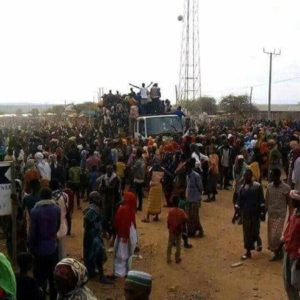Young Popeye
Call me pops
Ethiopia: Two killed in unrest in eastern Ethiopia
ESAT News (September 12, 2017)
Two people were killed and several others wounded in the ongoing clashes between the Somali and Oromo communities in eastern Ethiopia as the president of the Somali region, Abdi Omar, reportedly decreed the Oromos to leave the region.
The Oromos held protest rallies in Aweday, Deder, Kobo, and Chinaksen towns today against the violent actions of the Somali Liyou Police that has been blamed for the death of several people in the ongoing turf war between the two communities.
Six cars, including a military vehicle, were set ablaze while transportations to Addis Ababa, Jijiga and neighboring towns were disrupted.
Information received by ESAT show several Oromos in Somali region were heading to the city of Harar following Abdi Omar’s order to leave the Somali region. Hundreds have taken refuge at eastern command military base.
Four students were injured last week when a grenade was thrown into a school in Meiso, Harar. Reports also say six people were injured in the ensuing shootout in the town.
The explosion came a day after a failed meeting between the two communities in which the Oromo representatives walked out in protest against a proposed map showing their land incorporated into the Somali region.
A communal clash has been going for few months now between the Oromos and Somali communities in west Hararghe where the Oromos accuse the Somali region special police forces have killed several of their people. There were also reports of killings of members of the Liyou police by the Oromos.
https://ethsat.com/2017/09/ethiopia-two-killed-unrest-eastern-ethiopia/
we will not tolerate illey pushing oromos into harar, we have enough of them. so the liyu must either guard harar or we will ship them back




 The name changes are confusing
The name changes are confusing 









